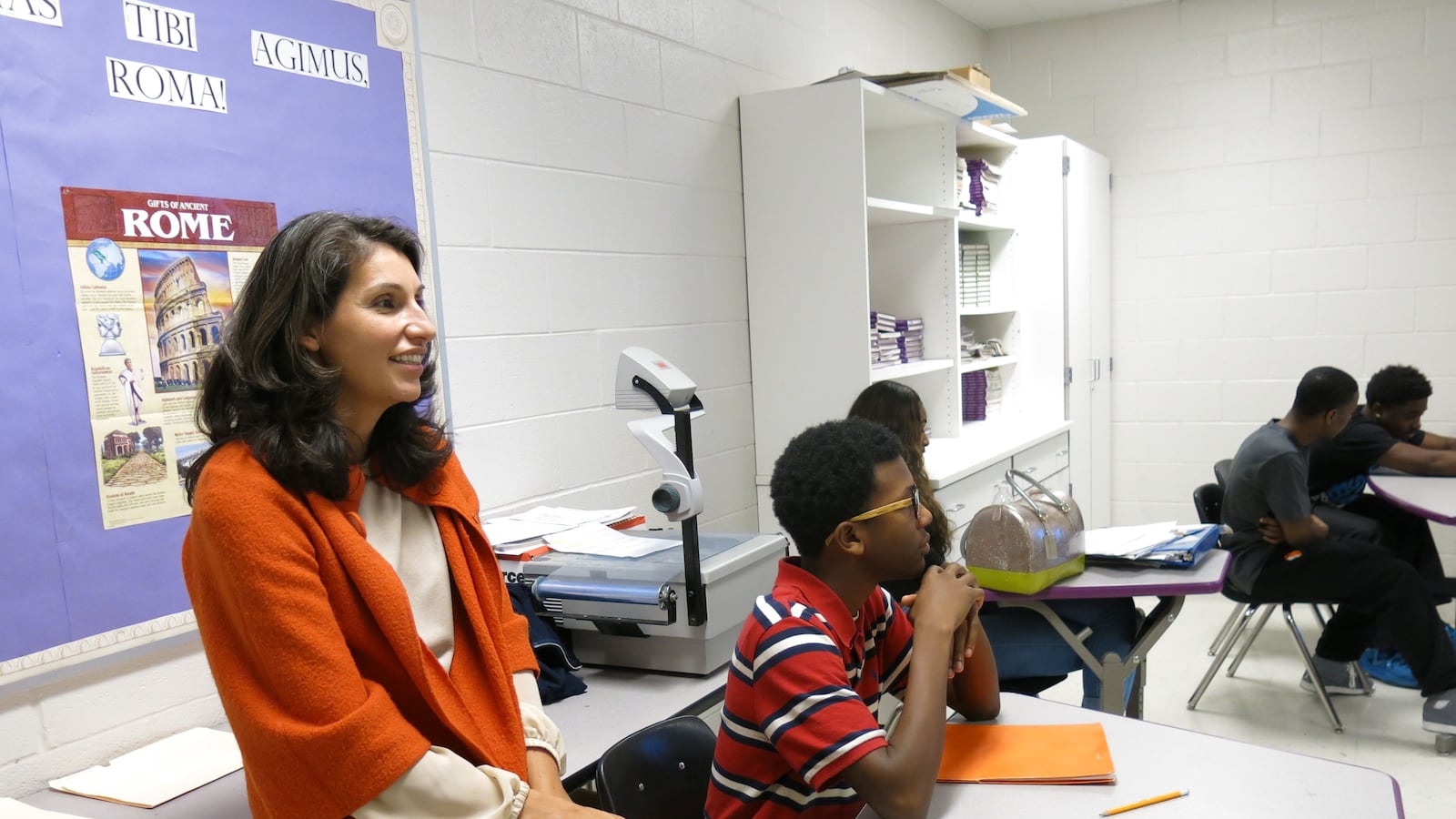Heidi Ramirez has resigned as chief of academics for Shelby County Schools, less than 2½ years after coming to Memphis to help turn around the fledgling district following a massive restructuring of the city’s education landscape.
In a letter emailed Tuesday morning to district principals and instructional leaders, Ramirez said she was leaving “to be closer to loved ones and take on new challenges.”
“I am so proud of the great work we have been able to accomplish together,” she wrote. “Together, we have accelerated implementation of both supports for struggling learners and good first teaching — especially in literacy, while also improving the overall climate for learning for both students and staff.”
Shelby County Schools confirmed Tuesday that her resignation is effective March 31, and Ramirez wrote that she would “ensure a successful transition process.”
Her resignation comes a little over a month after a restructuring of district leadership that included the promotion of Innovation Zone leader Sharon Griffin to chief of schools. Ramirez, who was hired as chief academic officer, became chief of academics. Meanwhile, Griffin took on some of the responsibilities previously shouldered by Ramirez and Brad Leon, now chief of strategy and performance management. All three serve on Superintendent Dorsey Hopson’s cabinet.
Ramirez came to Memphis from Milwaukee Public Schools. She previously was associate dean for the College of Education and director for Urban Education Collaborative at Temple University, and at one time served on Philadelphia’s School Reform Commission.
When she arrived in Memphis in 2014, she was tasked with helping to increase the number of students reading on grade level, as well as the district’s graduation rate.
Those efforts may be starting to pay off.
She spearheaded a comprehensive literacy plan that pushed to improve reading skills across the curriculum. Last year, the district earned high marks for literacy growth for high school students who took the state’s TNReady test. However, overall growth scores were down, and the district is still far from its Destination 2025 goal of boosting third-grade reading proficiency to 90 percent by 2025.
Graduation rates have seen a slight bump, too. Some 78.7 percent of seniors received their diplomas in 2016, up from 75 percent the previous school year.
“I’m most proud of the work (we) have done to raise and reinforce expectations for our students,” she wrote, “and the continued evidence … that all of our children can achieve to high standards of career and college readiness…”
In her letter, Ramirez trumpets that student attendance is up and suspensions are down. She cites improvements in kindergarten readiness and student access to complex tests, and also notes that the growth in graduation rates extends to the district’s large population of black students, those with disabilities, and English language learners.
In a statement, Hopson praised Ramirez, especially for her work on Destination 2025, the district’s strategic plan.
“(Her) vision has helped enhance planning and coordination across all of our academic departments and stakeholders — from teachers and coaches to school and district leaders,” he said.
Hopson told Chalkbeat that the district will look to tweak the job description in collaboration with Griffin before Ramirez leaves. “With all the work she’s done, I think we’re going to take it to the next level,” he said.
With approximately 105,000 students, Shelby County Schools is Tennessee’s largest school district, the result of a 2013 merger of Memphis City Schools and legacy Shelby County Schools, followed by the exit a year later of six suburban municipalities that started their own school system.
Correction, February 21, 2017: This article has been updated to include the correct percentages of graduation rates for Shelby County Schools. A previous version listed the state percentages instead of the district’s.

